The classroom is a dynamic environment that brings students from all backgrounds, abilities, and personalities together. To satisfy students’ particular requirements, being a good teacher necessitates the use of creative and novel teaching tactics.
It might be difficult to predict which teaching tactics will work best with your pupils, whether you have been teaching for two months or twenty years. As a teacher, there is no such thing as a “one-size-fits-all” answer, so here is a list of excellent teaching tactics to get you started.
Going forward in this article, we will be stating down the most effective teaching strategies for the classroom that you could use for becoming a better teacher. These teaching strategies will certainly help you to evolve as a great teacher!
What Are Teaching Strategies?
Teachers utilize teaching strategies, also known as instructional strategies, to deliver course information in a way that keeps students engaged and exercises multiple skill sets. Depending on the unit topic, grade level, class size, and classroom resources, an instructor may use a variety of teaching styles.
To fulfil teaching and learning goals and support different types of pupils, a variety of instructional tactics are used. Teachers may, for example, choose tactics adapted to English-language learners, students with ADHD, or students with learning disabilities according to the student’s needs and the course’s objectives.
Instructors can also choose classroom activities based on their teaching methods, such as differentiated education utilizing a tic-tac-toe strategy. Specific tactics, such as problem-solving strategies, can also be used to teach specific abilities. Activities that encourage kids to think and talk in small groups, such as think-pair-share, are great for cooperative learning, while activities that get them outside are great for active learning.
Given below is a list of the best teaching strategies:
- Differentiated Instruction
- Active Learning
- Project-Based Learning
- Inquiry-Based Learning
- Blended Learning
- Flipped Classrooms
- Cooperative Learning
Now we will see these teaching strategies in detail!
Different Teaching Strategies
These are the different teaching strategies:
1. Differentiated Instruction
Differentiated instruction refers to the various strategies teachers employ to suit a wide range of students. Teachers actively watch students and reflect on class activities and assignments to create experiences that are tailored to the class’s learning styles as well as the students’ varying levels of aptitude and knowledge.
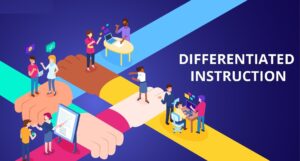
Teaching is difficult for a variety of reasons, including the fact that each student has a unique learning style and progresses at a different rate. Teachers seek to properly personalize and pace their classes to each student’s requirements and learning styles, in addition to covering certain topics to satisfy district and state standards.
As many teachers know, meeting the individual requirements of each kid in class can be difficult. Fortunately, differentiated instruction may be the answer. Differentiated education is an approach for ensuring that every student, regardless of learning style, masters any given idea. There are different instructional strategies list in differentiated instructions.
2. Active Learning
The word “active learning” refers to a wide range of activities that take place in the classroom. But what exactly does it imply? It is critical, to begin with, an active learning definition that explains the process clearly. Comparing active learning to its polar opposite, passive learning, is a simple method to grasp the concept.
This method is recognizable to everyone who has ever sat through a lecture. Teachers are considered as the source of knowledge and understanding in passive learning. In an active learning classroom, on the other hand, teachers guide students while they build their knowledge and understanding.

The emphasis is on students taking an active and involved part in their learning. When students are actively engaged in their studies, they learn more effectively. In reality, studies comparing active learning methodologies versus traditional, passive, lecture-based learning abound in education research.
Even though the active tactics used in these experiments differ significantly, they all share one feature. Pupils who study in active learning classes outperform students who learn in traditional (passive) courses. Active learning is at the heart of the flipped classroom concept. It is one of the best teacher strategies.
Basic facts are introduced at home through video lectures and readings. Students can then use their teacher’s help to put those fundamental facts together into genuine comprehension in the classroom. Because students learn better when they are actively involved in their learning, flipped classrooms devote class time to projects, investigations, discussions, and other activities that actively engage students.
3. Project-Based Learning
The next one in types of teaching is project-based learning. Learners gain knowledge and skills by participation in in-depth, long-term projects, which is referred to as project-based learning (PBL). Many instances of project-based learning may be found in the setting of scientific and social studies programmes, among other places.
Initiatives are determined by the underlying objectives and might vary from web design to movie production, from research investigations to large-scale survey projects. Identifying and designing complete projects that allow students to learn relevant abilities while completing them may be done by teachers who have identified essential questions or goals.
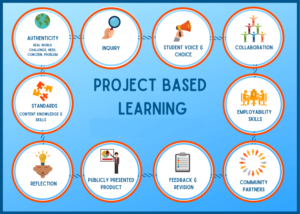
If instructors are creating project-based learning experiences, they should think about what the most significant major concepts are and how a project will help students explore these ideas more deeply.
In the framework of a curriculum, projects may evolve spontaneously over time if they are allowed to. Teachers may save time and find relevant ideas for project-based learning by researching the various resources accessible online and in teaching handbooks, which can save them both time and money.
Read Here: Most Effective Teaching Strategies For Enhancing Classroom Experience
4. Inquiry-Based Learning
The concept of inquiry-based learning (IBL) is that it begins with a questioning mindset and moves forward from there. Students may ask questions regarding a specific subject either on their initiative or after being urged to do so. It is one of the best instructional strategies for teachers.
They may research to discover answers, participate in activities that will assist them in their pursuit of answers, or work cooperatively to find solutions; but, all learning derives from the questions. Students get an understanding of their ability to take responsibility for their learning as a result of participating in inquiry-based learning.
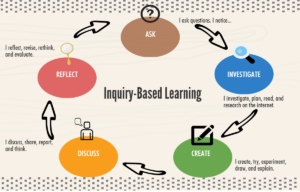
What are the advantages of inquiry-based learning vs project-based learning, and how do they differ? Although these systems and conceptual frameworks can overlap, inquiry-based learning is always prompted by students’ questions, which serves as the primary motivator for students to learn new information or develop new abilities.
It has been shown that inquiry-based learning may be particularly motivating for kids who do not react well to traditional top-down educational paradigms.
5. Blended Learning
Today’s educators are well aware that technological advancements have had a significant influence on how teaching and learning are conducted. Blended learning is one of the phenomena that has emerged in recent years and is beginning to play an increasingly significant role in education. What is blended learning, on the other hand, exactly?
This is a great teaching strategy.
According to the concept of blended learning, some students may benefit from completing part of their learning in a digital environment while still completing part of it in a traditional classroom setting. Blended learning has several advantages, including the fact that many students learn best when they may work independently, on their schedule, and via interaction with digital technology.
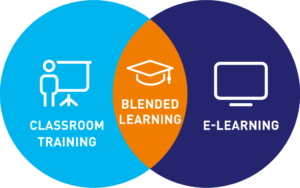
At the same time, learning that takes place in this virtual environment is often enhanced by face-to-face encounters. In many respects, blended learning is the best of both worlds because it blends the best of both worlds. Blended learning has grown in popularity throughout time, owing in large part to the rising accessibility of technology and the continued interest in using digital learning tools.
Students-centered teaching, easier data collecting, and enhanced engagement are just a few of the benefits of blended learning in the classroom that have been highlighted by many educational advocates. To be sure, blended learning should be implemented with caution and consideration, just as any other educational model should be, to enhance student learning as its goal.
6. Flipped Classrooms
The next one on our list of teaching techniques is flipped classrooms. Traditionally, instructors would offer a lesson to pupils and then assign classwork or homework to reinforce the learning. When it comes to flipping a classroom, it is the polar opposite of the usual approach of instruction. An online lecture or another direct teaching, such as watching a video, is completed by students before the class discussion of the content is held in a flipped classroom setting.
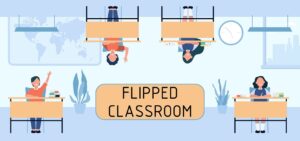
The goal is for students to be exposed to the content in advance, a process known as first-exposure learning, so that they may acquire the ideas at their speed once they have seen them. Students are better able to concentrate on engaging in class and receiving feedback on their efforts during the session, rather than afterwards, as a result of this practice.
Teacher’s that use the flipped classroom approach is better able to encourage their pupils to participate in active learning activities. With the flipped classroom method of education, students get significantly more engaged in the lesson discussion by participating in debates, small group discussions, or in-depth research throughout the lesson discussion.
In essence, a flipped class replaces the tasks that are normally accomplished in class with activities that are undertaken outside of class. It is one of the best teaching methods.
7. Cooperative Learning
Working together to accomplish things is what cooperative learning is all about. It is a style of imparting instruction that entails breaking classrooms into smaller groups and having them do activities together. Students are often selected in a planned manner to ensure that each group has a diverse variety of skills, talents, and learning styles. Cooperative learning is one of the best teacher strategies.
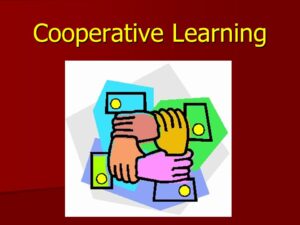
This enhances students’ capacity to learn from one another, which is one of the most significant advantages of cooperative learning. According to cooperative learning theory, this form of learning encourages cooperation and respect among students, as well as aids in the development of their communication and social abilities. This technique of education may be used by instructors of various grade levels and subject areas.
How To Improvise Teaching Strategies Using Different Methods?
These are the best methods to improvise teaching strategies:
1. Get to Know Your Students and Help Them Develop Respect For You
Although it may seem obvious, an awareness of your students and their learning requirements is the foundation of any effective instruction. This is closely related to the regard in which you are regarded by your students. The connection that exists between a teacher and a student is a critical component of the learning process.
Take the time to get to know a new class from the very beginning, to discover what inspires them and what their learning obstacles are. This is a teaching method that is often missed. We make sure that all of our one-to-one tutors are aware of a student’s special educational needs before beginning work with them, and they take the time to get to know each student throughout the 1-to-1 lessons by asking about their hobbies and interests, as well as the kinds of things they have been learning at school.
Thus, whenever it is feasible, an instructor may personalise a lesson or an instructional method such that it is suitable for the student by using real-world examples. Consider instructional strategies for teaching for knowing your student and help them develop respect for you!
Read Here: Standardized Testing: Definition, Pros & Cons
2. Recognizing And Correcting Mistakes
Correcting mistakes is one of the most effective teaching strategies. If you have ever made the mistake of spelling a word incorrectly on the board, you know how much kids like pointing out errors. Provide an example of a new skill that involves errors while you are teaching it to someone else.
Allowing children to practise the skill by detecting and correcting their faults is recommended. For example, many students dread learning grammar via conventional exercises and courses, yet many can recognise faults in their writing on their own, even if they are unsure of how to correct them.
Try handing out an assignment and contemplating on whether or not to include grammatical problems, then talking over the task in class to see what students can pick up on during the discussion.
After that, have a conversation about why the mistakes would be incorrect and see what students can come up with, and then provide a small lesson on the grammatical issues in question. Educational strategies are far more relevant for pupils to address errors when they are placed in a larger perspective.
It is also very beneficial to establish a classroom environment in which making errors is considered a normal part of the learning process for pupils, so reducing students’ fear of subjects they may find challenging strategies in teaching.
3. Providing Feedback Is The Third Step
In the absence of your feedback, students may not be aware that they are doing satisfactorily. Create a culture in your classroom where students get regular written or verbal feedback on individual or group work by providing feedback regularly. Remember that students often do not understand why something is incorrect, so if feasible and time permits, spend a few seconds explaining why something has been marked “incorrect” on exams and assignments.
It is also a good idea to do frequent “group feedback” sessions that are based on the trends you see in your students’ work. If a significant number of your students seem to be struggling with a particular idea, it is frequently more advantageous to design a lesson around that issue while also addressing the trends you have seen in classwork more broadly.
Maintain a healthy balance between giving students enough praise and providing criticism on areas where they may improve or where they should change their behavior’s. Encouragement is important in maintaining pupils’ morale, motivation, and drive. Finally, it might be useful to turn the tables on oneself from time to time.
Allow the pupils to offer your comments to let you know how they think you are doing as well. This may be accomplished via a class discussion, the distribution of class surveys (which can be done anonymously or not), or the request that students provide their comments through email. This is one of the best teaching methods and strategies.
4. Visual Organizers
Visual organizers are one of the best methods of learning. In a visual presentation, graphic organisers are a simple and effective tool for students to use to brainstorm and arrange their thoughts and ideas in a visual format. To put it another way, they assist pupils in organising knowledge so that it is simpler for them to absorb. Graphic organisers may be used in any class to structure writing, brainstorming, planning, problem-solving, and decision making.
They can also be used to arrange any activity. The Venn diagram, idea map, KWL chart, and T chart are the most often used visual organisers. An experienced teacher understands that not every teaching approach you use will be successful in all circumstances.
There will be some successes and failures, and depending on your teaching style and the learning styles of your pupils, you will discover which tactics are effective and which are not. It may take some trial and error, but it is not a bad idea to try them all at least once.
5. Collaborate with others
To finish an assignment, divide the class into groups of three or four people and assign them to work together. This is an effective teaching method, particularly for younger children who insist on constantly working with their close group of friends. Group assignments promote collaboration and assist your students in achieving success.
For example, in science, you may divide the class into small groups for lab-based projects and assign each member of the group a specific task to carry out. For example, you may assign one person to experiment while another writes down notes and another reads the instructions for improving teaching methodology!
It is important to connect students who need more assistance with those who have a superior comprehension of the subject matter. Those who are more knowledgeable about the issue may share their expertise with their peers, allowing them to have a deeper understanding of it. Overall, group work is an engaging and dynamic method of delivering a lesson.
